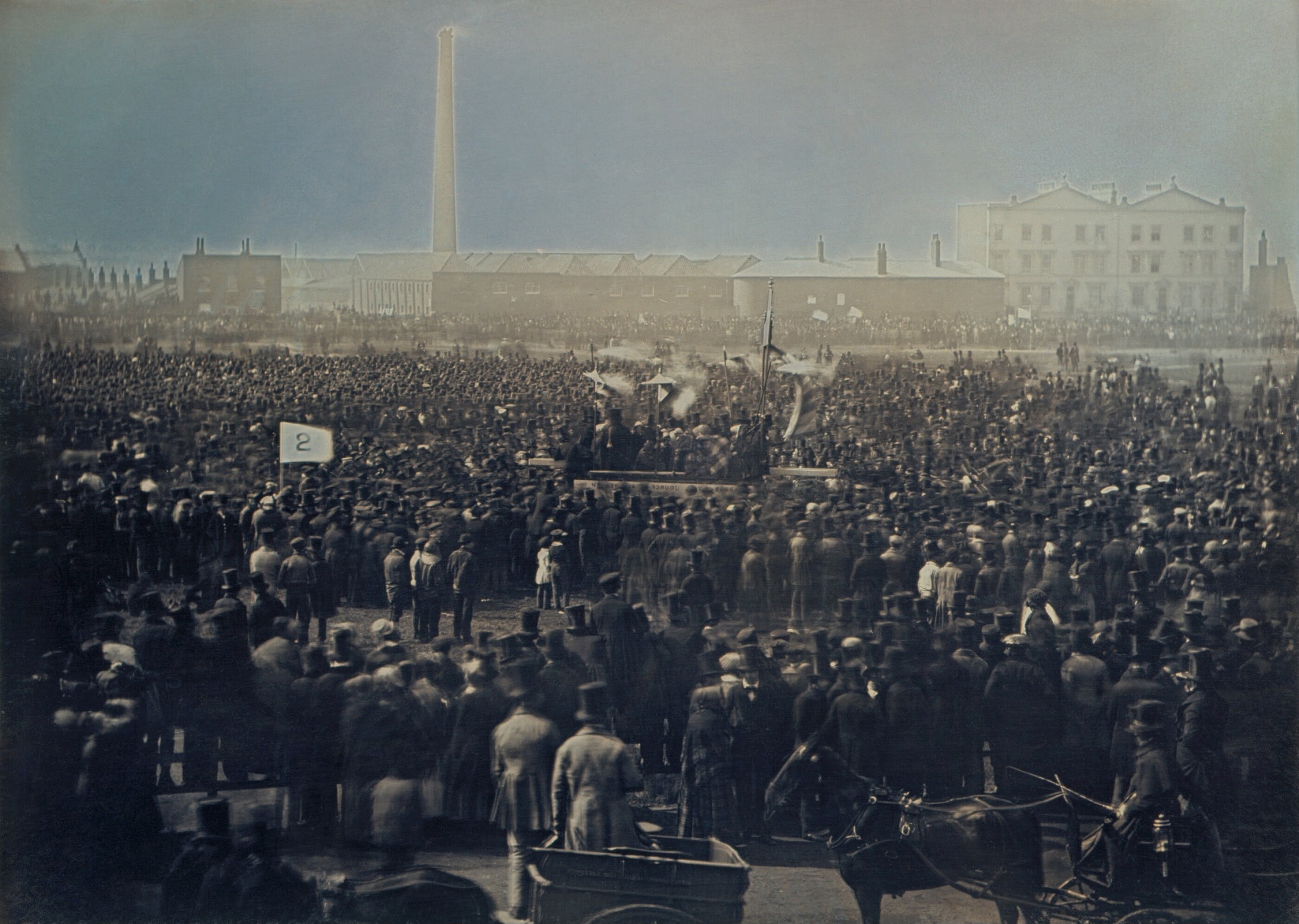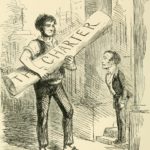View of the Great Chartist Meeting on Kennington Common. (on 10 April 1848). This daguerreotype, purchased by Prince Albert, records the immense crowds at one of the Chartist rallies held in South London in 1848. Calling for political reform, and spurred on by the recent February Revolution in France, the Chartist movement was seen by many as a terrifying threat to the established order. Fears were so great that on the eve of the meeting pictured, the Duke of Wellington stationed troops across London and the royal family were removed to Osborne House on the Isle of Wight. Photo: Daguerreotype by William Edward Kilburn (1818 – 1891), restored by Bammesk. Public Domain. Source: Wikimedia Commons.
Forside 1838 View of the Great Chartist Meeting on Kennington Common. (on 10 April 1848). This daguerreotype, purchased by Prince Albert, records the immense crowds at one of the Chartist rallies held in South London in 1848. Calling for political reform, and spurred on by the recent February Revolution in France, the Chartist movement was seen by many as a terrifying threat to the established order. Fears were so great that on the eve of the meeting pictured, the Duke of Wellington stationed troops across London and the royal family were removed to Osborne House on the Isle of Wight. Photo: Daguerreotype by William Edward Kilburn (1818 - 1891), restored by Bammesk. Public Domain.
View of the Great Chartist Meeting on Kennington Common. (on 10 April 1848). This daguerreotype, purchased by Prince Albert, records the immense crowds at one of the Chartist rallies held in South London in 1848. Calling for political reform, and spurred on by the recent February Revolution in France, the Chartist movement was seen by many as a terrifying threat to the established order. Fears were so great that on the eve of the meeting pictured, the Duke of Wellington stationed troops across London and the royal family were removed to Osborne House on the Isle of Wight. Photo: Daguerreotype by William Edward Kilburn (1818 – 1891), restored by Bammesk. Public Domain.


























